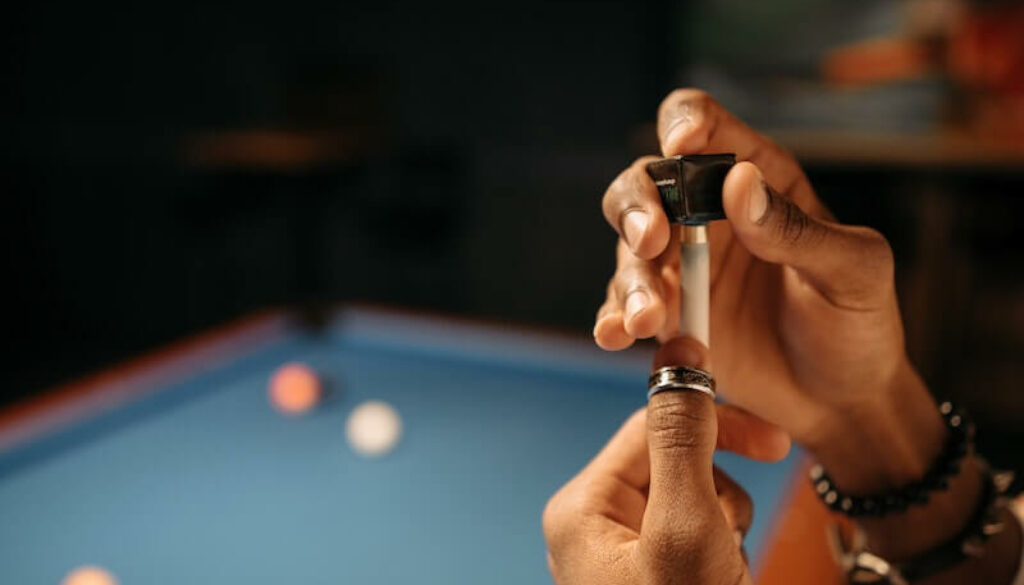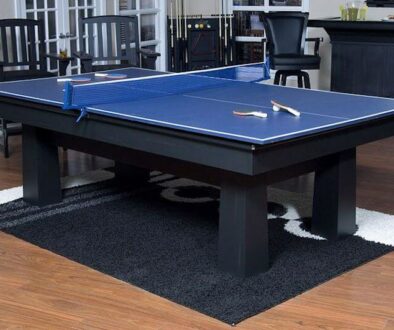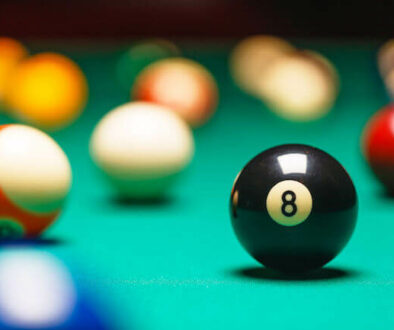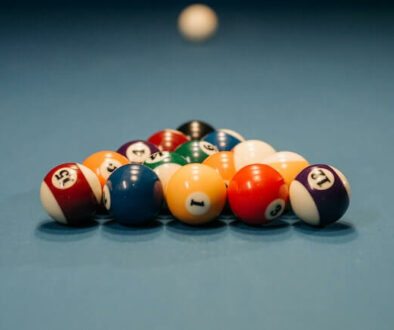Pool Cue Chalk Simplified: Facts, Brands and Why It Works!
As pool players, most of us know just how essential cue chalk is when playing pool. But for those who don’t, we hope this article provides you with the information you need to play better pool and understand why pool chalk is one of the most important accessories available to pool players.
In this article, we’ll discuss what pool cue chalk is, when you should use it, different cue stick chalk colors, chalk brands, and more! First things first – What is pool cue chalk?
What is Pool Cue Chalk?
Pool chalk is an important cue accessory for pool players and is made of crushed silica (silicon and oxygen) and corundum (crystallized aluminum oxide).
So, what does chalk do exactly?
When applied to the tip of a cue stick, chalk adds much needed friction and grip so you can get a solid, accurate strike on the cue ball.
The added grip is especially useful when hitting off-center shots because it helps give players a chance on mis-hits instead of skidding across the cue ball or popping it off the table.
Before we address some more frequently asked questions regarding chalk, we recommend you check out this video to learn exactly how to chalk your cue.
Why chalk a pool cue?
There are 3 primary reasons you should chalk your cue:
- Helps a pool cue tip last longer
- Creates friction needed to effectively strike the cue ball
- Results in more consistent strikes and less mis-hits
Without chalking a pool cue, you will likely have much less consistent contact with the cue ball due to the leather tip being slippery without the chalk. This problem is made worse if your cue’s tip is old and worn.
How often should you chalk a pool cue?
Players should make a habit of chalking their cue before every single shot. It can be easy to forget sometimes, but chalking on every shot increases your chance of winning games when it matters most.
If you’re chalking on every shot, it won’t take more than 1 or 2 swipes over the cue tip with the chalk to make sure it is sufficiently covered and ready for the next shot.
Some players will apply more cue ball spin than others, and doing so means there is a higher chance of a bad strike. These players will want to make extra sure that chalk is covering all areas of the tip to ensure good contact.
Do you chalk a break cue?
Yes, it is recommended to chalk a break cue that has a harder tip. This applies to phenolic and hard leather tips alike. Any pool cue will benefit from have more friction on the tip, regardless of whether or not it is a break cue.
Chalking a break cue is best practice because harder tips are even more prone to mis-cues due to having a harder, more slippery surface. Break cue tips have zero (or almost zero) elasticity, which helps the cue’s tip stay in contact with the cue ball longer.
Hard leather break cue tips will be easier to chalk and will hold chalk longer since they can be scuffed. Phenolic tips are not scuffable so they will not hold chalk after hard hits.
Does pool cue chalk stain?
Yes, pool chalk can stain, and it will likely stain pool table felt and your clothes if you are an avid player. This is a simple fact that we all have to accept. But, chalk stains can be reversed.
For chalk stains on clothes, simply run your clothes through a warm water wash cycle when you change. Most of the time, it will come out. But if you get into the habit of getting chalk in the same spot on your shirt or pants when you play, over time it will likely become permanent, and that’s ok! This helps others know you’re a true pool fanatic.
Players also have to accept that they will get chalk stains on their pool table. Chalk stains can be a little more serious when they’re on a table, especially if you aren’t in the habit of cleaning up your table regularly.
How to clean pool chalk off a pool table
In order to clean chalk off your pool table, you should have a small portable vacuum with a hose/brush attachment. The table can be cleaned in a couple easy steps:
- Vacuum dirty spots to clean and loosen up debris
- Wipe the table down with a damp (should not drip) microfiber cloth
This should be sufficient as long as you do this regularly. For some more detail, visit Dr. Dave’s table cleaning tutorial.
Can pool cue chalk go bad?
No, pool chalk won’t go bad if kept in normal indoor conditions with regular air flow. If you are ever worried that your chalk has moisture built up in it, you can bake the chalk in the oven at about 200 degrees for 10 or 15 minutes to dry up any moisture.
Chalk is naturally moisture wicking and will stay dry as long as it is left out in the open for reasonable amounts of time. Pool chalk can last decades if kept in a normal indoor atmosphere.
Is pool chalk toxic?
Today’s pool chalk is not typically toxic if accidentally consumed or inhaled in small amounts. It may irritate the lungs or stomach, but should not be serious if this happens with trace amounts. For this reason, keep pool chalk off the floor and away from children.
One thing to be aware of is that, in rare cases, some pool chalk can contain traces of lead, which could cause lead poisoning.
Historically, the only colors of pool chalk that have been known to contain lead are green, yellow and red (and possible variations of these 3). This is because these colors can be created with lead-based pigments. We recommend staying away from these colors of chalk.
Pool Chalk Colors
Pool chalk comes in a variety of color options, which is great for players because they can decide which color is best based on the color of their table. This all really comes down to personal preference. There is no right or wrong when it comes to chalk colors.
Here are some common colors of pool chalk you can buy:
- Blue
- Sky Blue
- Brown
- Tan
- Black
- Spruce
- Burgundy
- Forest Green
- Green
- Gold
- Gray
- Rust
- Red
- Pink
- Purple
Some of these colors may be difficult to come by, especially nowadays in the midst of supply chain issues.
Does pool chalk color matter?
In the grand scheme of things, pool chalk color does not matter. But, if the chalk color matters to you, then it absolutely matters!
No matter the color, all pool cue chalk is going to accomplish the same thing – it will provide more grip and friction for cue ball contact.
Some players like having a chalk color that is similar to their table felt color because chalk marks don’t stand out as much to the naked eye. Conversely, other players like chalk that contrasts more with their table so they can see chalk spots easily in order to clean them.
Chalk will be impossible to keep off your table completely, so this is something you should accept before committing to buying a table and cue chalk. It comes with the territory.
Why is most pool chalk blue?
Blue is the most common color of chalk used when playing pool. This is because blue chalk is somewhat similar in color to the most common pool table felt color, which is green. Blue chalk stains, while visible on green felt, aren’t an eye sore.
Another common table felt color is blue. Blue chalk matches the color of these tables, so they will typically look cleaner, longer.
Historically, blue chalk has been widely accepted in homes and pool halls all over, so this contributes to why blue chalk is as common as it is.
Best Pool Cue Chalk Brands
There are a few pool chalk brands that stand above all others, and we will provide the best chalk options from each. These brands are as follows:
- Predator Chalk
- Kamui Chalk
- Taom Chalk
- Master Chalk
- Magic Chalk
- Blue Diamond Chalk
It’s important to keep in mind that the cost of chalk (especially higher end) is quite high. If you want to try Kamui or Taom chalk, that’s awesome, but we don’t recommend buying these brands all the time if you’re wanting to save some money.
Predator Chalk
Predator 1080 Pure Cue Chalk, 5-count
- Color: Blue
- Pure silica
- High consistency
- Increased spin
- Longer on-top chalk life
Kamui Chalk
- Color: Blue
- Best balance of compounds while minimizing ingredients
- Chalk particles are carefully regulated
- Easy application
- High adhesion
- Color: Blue
- Maximize friction
- Creates a large sweet spot
- Reduces slipping and mis-cues
- Color: Blue
- Consistent playability
- Ultra fine particles
- Harder compound than previous models
- Reduced chalk transfer to cue ball
Taom Chalk
- Color: Light Green
- Latest Taom formula
- Super clean with great grip
- Developed with help from billiards professionals
Master Chalk
Master Premium Pool Chalk, 12-count
- 8 color options
- Cake-free and flake-free
- Minimizes mis-cues with increased friction
- Made in the USA
144-count option (available in 3 colors)
Magic Chalk
- Color: Blue
- Russian-made
Green option available here
Blue Diamond Chalk
Blue Diamond Pool Chalk, 4-count
- Color: Blue
- Produced in limited quantities
- Premium control
- Long-lasting cue tip coverage
2-count option available here
Wrap Up
Chalk is an integral part of playing pool and gives us so much more of an advantage than if we didn’t use it. Pool cue chalk is a great thing to buy in bulk because it lasts so long and can be had for a pretty low price.
We hope we’ve answered any questions you have about pool cue chalk, and we hope you can find a great chalk option within one of the products we have provided. If you’re wondering about anything else chalk-related, feel free to let us know in the comments!
Happy Shooting!




